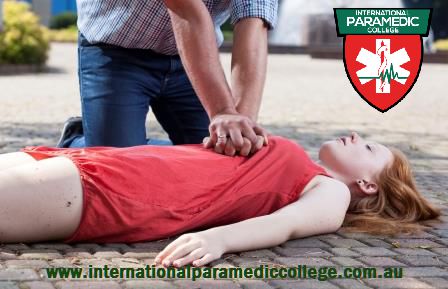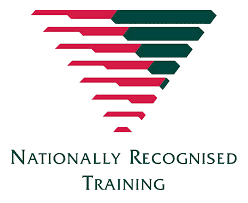HLTAMB013
Contribute to Managing the Scene of an Emergency

What you will learn by studying this unit
- Assess the environment to identify real and potential hazards
- Communicate with those involved in the incident
- Control hazards
- Establish relationships and lines of communication with other services and networks
- Evaluate the emergency scene environment
These units are common units in the paramedical and general health care sector training and education courses.
All our units are written by us and have a paramedic/prehospital care focus
Paramedical EMT First Responder Courses and Learning Pathway to Becoming a Paramedic
HLT21020 Certificate II in Medical Service First Response
HLT31220 Certificate III in Basic Health Care
HLT31120 Certificate III in Non-Emergency Patient Transport (NEPT)
HLT41120 Certificate IV in Health Care (First responder EMT Medic)
HLT51020 Diploma of Emergency Health Care (Paramedical Training)
Health & Administration Units
HLT37315 Certificate III in Health Administration
HLT47315 Certificate IV in Health Administration
HLT37215 Certificate III in Pathology Collection
Nursing & Community Services Units
CHC43115 Certificate IV in Disability
CHC43015 Certificate IV in Ageing Support
HLT51020 Diploma of Nursing
Elements and Performance Criteria for this Paramedic/Medic unit
What does this mean? Elements, which tell me what I should be able to do if I am competent in this unit of a course; Performance Criteria, which tell me how I can show that I am competent in the individual tasks or activities to the required standards
|
ELEMENT |
PERFORMANCE CRITERIA |
|
Elements define the essential outcomes of a unit of competency. |
The Performance Criteria specify the level of performance required to demonstrate achievement of the Element. |
|
1. Assess the environment to identify real and potential hazards |
1.1 Gather information to enable accurate assessment of the situation or incident 1.2 Accurately identify existing and potential hazards. 1.3 Assess the approach to an incident, identifying visible signs of danger 1.4 Position appropriate resources to facilitate safe and timely access and egress |
|
2. Communicate with those involved in the incident |
2.1 Communicate information in a clear, concise and comprehensive manner about the incident or scene to coordinator and medical and other emergency and allied services 2.2 Provide information to people involved in the incident, or facilitate others to do so 2.3 Communicate and gather information from other organisations at the scene to inform the improvement of services and avoid duplication of effort |
|
3. Control hazards |
3.1 Ensure security and safety of the scene and negate or minimise existing and potential hazards to patients, colleagues, and others 3.2 Use personal protective clothing and equipment for infection prevention and workplace health and safety 3.3 Manage appropriately any resistive or combative patients or others to ensure security of the scene 3.4 Use hazard-controlling resources safely |
|
4. Establish relationships and lines of communication with other services and networks |
4.1 Develop and use relationships in a way that benefits the organisation by drawing on shared expertise, information, and resources 4.2 Work effectively as part of a multidisciplinary emergency team, communicating in a clear, concise and comprehensive manner 4.3 Support cooperation through contribution to relevant network meetings or forums 4.4 Consult with affected and interested parties to support organisation goals and objectives |
|
5. Evaluate the emergency scene environment |
5.1 Monitor the environment at the scene to identify changes that may compromise safety or patient care 5.2 Recognise environmental changes requiring additional resources and promptly communicate this to appropriate agencies 5.3 Gather and evaluate data from other organisations to inform improvements in managing emergency scenes |
Performance Evidence for HLTAMB013 – Contribute to Managing the Scene of an Emergency:
The candidate must show evidence of the ability to complete tasks outlined in elements and performance criteria of this unit, manage tasks and manage contingencies in the context of the job role. There must be evidence that the candidate has:
- contributed to managing 1 emergency scene, including:
- acknowledging and responding to a range of views and clarifying information from persons at the scene
- establishing and maintaining inter-service communication and liaising and networking with personnel from other services to negotiate solutions of required tasks
- identifying and managing any hazards at the scene and facilitating information to the public concerning safety
- managing multiple competing priorities
- identifying and implementing available resources in accordance with established clinical guidelines and protocols.
Knowledge Evidence, HLTAMB013 – Contribute to Managing the Scene of an Emergency:
The candidate must be able to demonstrate essential knowledge required to effectively complete tasks outlined in elements and performance criteria of this unit, manage tasks and manage contingencies in the context of the work role. This includes knowledge of:
- relevant policies and procedures relating to emergency management, including:
- organisation policies and procedures
- allied service procedures
- State/Territory policies and procedures
- working knowledge of command, control, and coordination responsibilities
- relevant current national standards such as
- Australian Emergency Management Handbook Series
- National Emergency Risk Assessment Guidelines
- Australian/New Zealand Standard AS/NZS ISO 31000:2009 Risk management – Principles and guidelines
- National Safety and Quality Health Service (NSQHS) Standards
- Australian Guidelines for the Prevention and Control of Infection in Healthcare, 2010
- real and potential hazards and their effects
- procedures and techniques required to control resistive or combative patients or others to secure the scene
- roles and responsibilities of other organisations including services provided by medical and other emergency and allied agencies, and their limitations
- current practices, procedures, and equipment used in communicating in the workplace including:
- organisation confidentiality requirements
- organisation policy and procedures relating to liaison with other organisations.
Assessment Conditions for HLTAMB013 – Contribute to Managing the Scene of an Emergency:
Skills must have been demonstrated in the workplace with the addition of simulations and scenarios where the full range of contexts and situations cannot be provided in the workplace. The following conditions must be met for this unit:
- use of suitable facilities, resources and equipment as per local governing body including:
- emergency vehicles
- personal protective equipment
- specialised equipment used in safe removal and egress
- organisation policies and procedures or established clinical guidelines and protocols on which the candidate bases the planning process
The skills in this unit must be applied in accordance with Commonwealth and State/Territory legislation, Australian/New Zealand standards and industry codes of practice.
To see more details on this paramedical unit HLTAMB013 – Contribute to Managing the Scene of an Emergency click here to view the full details here on training.gov
Pre Hospital Care and Health Care Jobs and Career Choices
Jobs and careers in the growing health sector are expanding and rapidly changing with advances in patient care and management. These units can be used across many roles in the health and community sector. Develop a career plan and have research our units and qualifications to see what might fit with your plan. For assistance, Contact us
Book Your Course Online Now

Locations Available
Click here to see our public course locations





